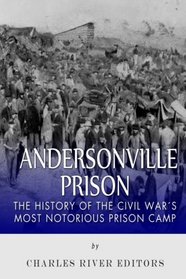Search -
Andersonville Prison: The History of the Civil War's Most Notorious Prison Camp
Andersonville Prison The History of the Civil War's Most Notorious Prison Camp
Author:
*Includes pictures *Includes accounts of the prison written by surviving prisoners *Includes footnotes and a bibliography for further reading *Includes a table of contents ?Wuld that I was an artist & had the material to paint this camp & all its horors or the tounge of some eloquent Statesman and had the privleage of expresing my mind to our h... more »
Author:
*Includes pictures *Includes accounts of the prison written by surviving prisoners *Includes footnotes and a bibliography for further reading *Includes a table of contents ?Wuld that I was an artist & had the material to paint this camp & all its horors or the tounge of some eloquent Statesman and had the privleage of expresing my mind to our h... more »
ISBN-13: 9781508686835
ISBN-10: 1508686831
Publication Date: 3/3/2015
Pages: 50
Rating: ?
ISBN-10: 1508686831
Publication Date: 3/3/2015
Pages: 50
Rating: ?
0 stars, based on 0 rating
Publisher: CreateSpace Independent Publishing Platform
Book Type: Paperback
Members Wishing: 3
Reviews: Amazon | Write a Review
Book Type: Paperback
Members Wishing: 3
Reviews: Amazon | Write a Review
Genres:
- History >> Americas >> United States >> Civil War




